Shooting in the dark is never a good idea because it’s too easy to hit something you don’t want to.
There’s stories every year of a father who kills a family member because he thought it was a bad guy breaking in his house. In short, you always want to be able to identify your target, before it’s time to shoot.
That’s where the tactical flashlight comes in.
You’ve probably seen tactical flashlights on some cop show. They’ll be looking through a dark building and have their lights mounted to their guns. Just so you know, that’s the wrong way to do it.
Oh, there’s nothing wrong with having a light mounted to your gun, the problem is keeping it on while clearing a building. That just makes you an easy target for the bad guys to find.
There are two basic ways of using a tactical flashlight with a pistol.
The first is to have the light mounted to the gun and the second is to hold the light in your support hand. Having tried both, I prefer having a gun mounted light, as that gives you the best control over your gun. However, you have to have a light with a momentary switch to do it right. Plus, because it’s attached to the gun, you have to point the gun at anyone or anything you’re trying to illuminate (which could be an innocent person).
The big problem with using a tactical flashlight with a gun is the same problem that exists with flashlights in any tactical situation; it tells the enemy where you are long before it tells you where they are. So, it’s not a big win to use one.
On the other hand, if you don’t use one, you may not be able to accurately identify the bad guys and separate them from the good guys. So, you should have one and be ready to use it.
There are several different ways that have been taught for holding the light in your support hand, but one of the most common is to hold it with the lens at the pinkie and the switch at the thumb, crossing the wrists so that the support hand can provide some support to help steady your gun.
The idea here is that the light and the gun’s muzzle move together. That way, you are always pointing your gun where you are looking. If you get a chance for a shot, you won’t have to move the gun to line it up, because you’ll already be lined up.
Other techniques for simultaneously holding the flashlight and your gun are beyond the scope of this article because …
The real trick behind using one is to use it momentarily.
In other words, you flash the light on, lighting up the room for less than a second and take a “snapshot” in your mind of what’s there. Then, you immediately move, quickly, before anyone who saw your light can shoot you. That’s important, as the bad guys probably won’t be as concerned about hitting an innocent as you are. The faster you move away from that spot, the better. Don’t wait to process the image you saw.
Once you’ve processed the image, you’ll know which shadows represent the good guys and which ones represent the bad guys. Hopefully, they will be far enough apart that you can get a shot, without putting the good guys at risk. If they are close together, you might have to use your light again.
Hopefully, you’ve got tritium or some other type of night sights on your pistol. If you do, then you don’t need to use your light again, assuming you have a good idea of where everyone is. You can line up the shot using just the sights, without giving your new position away again. Tritium sights glow in the dark, so you can shoot as long as you can identify the target.
I want to stress again the importance of clearly identifying your target.
Never make an assumption.
If you aren’t sure, then use your light; that’s what you have it for. Better to take another look, lighting up your flashlight again, than to take a risk of hitting a family member because you’re not sure.





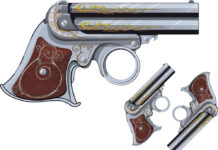




![What Level Holster Should You Be Using? [Video]](/wp-content/uploads/2024/04/Depositphotos_44548439_S-218x150.jpg)
![Case Study: Defensive Gun Use [Video] NSFW](/wp-content/uploads/2025/07/Depositphotos_282075792_S-218x150.jpg)



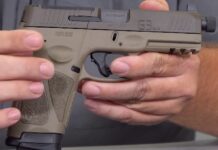


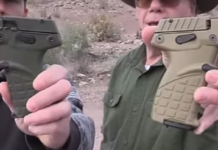
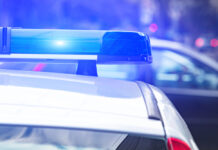
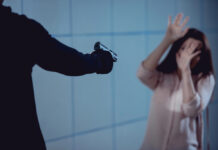
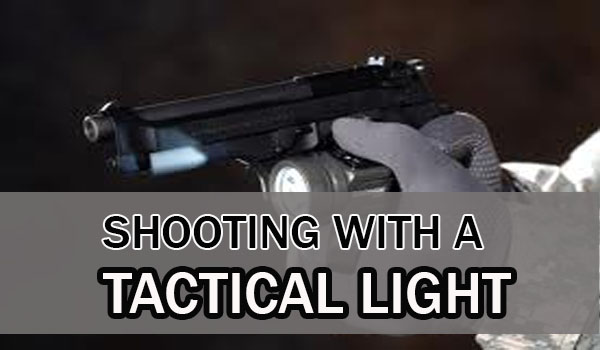










![Optic Ready vs Milled slides? [Video]](/wp-content/uploads/2024/02/image-3-100x70.png)
![[Checklist] What Gear You Need To Take Pistol, Rifle & Shotgun Training Courses [Video]](/wp-content/uploads/2023/07/Depositphotos_275087632_L-100x70.jpg)
![What is in Carter’s 2023 EDC? [Video]](/wp-content/uploads/2023/07/Depositphotos_146856137_L-100x70.jpg)



The place for the light is the hand opposite your gun hand and at arms length away from you body and forward enough to keep side illumination from revealing your stance. If you are squatting, high and forward. A multiple cell works well if you grip the rear end and extend it as you pie slice the cover
If your opponent fires at it you have a reasonable chance of a miss.
Good article.
Great reply Richard. That is the way I was trained. Holding the light next to your gun hand gives your adversary a greater chance of hitting you mid chest. In a real dark area, if you just do a flash to check out the room it will cause you to see spots and may trigger a false target. If you have to enter a dark room, use your ears first, until your eyes can adjust to the dark. That means enter, find cover and listen. If there isn’t any cover close, make yourself as small a target as you can. Use your flash light only when you think you have a target, then target their eyes. One trick to use if you think someone is in the room is, after you have taken a position toss a small object or coin to the left or right of the general area you think someone is at. This might force them to move and reveal their position. I would suggest that people find an instructor that can teach night fire techniques. It is well worth the time and money to learn.
A tactical flashlight is a must if you carry a handgun for personal protection. I prefer a hand held light over a weapon mounted light due to covering everything with your muzzle as you search or ID targets. During a dynamic critical incident gross motor skills take over. I train students on all light techniques but due to the startle flinch reflex the neck index and FBI technique usually work the best for students. Your light should have a Momentary Switch for tactical light use combined with constant movement.
Tactical strobe light worked good in a test we did. If you…stay behind the flashlight it will render your oponent almost sightless after you turn it off. Then you move your position and keep a minds eye on where he was. Light on….if he ( or she) is still in the same position, be sure of your target, fire 3 shots….Done.. I use a laser that I keep Right on Target at what I consider the distance I would incounter an intruder in my home.
I am not a instructor but I know “Practice makes Perfect”. Practice…..”seeing in the dark” with a friend. You CAN learn to “see” with your eyes, and your ears. Know your home in the dark. Your intruder won’t know where the chairs are, sofas are etc., in the dark.
[…] Shooting with a Tactical Light | Prepared Gun Owners […]
Comments are closed.